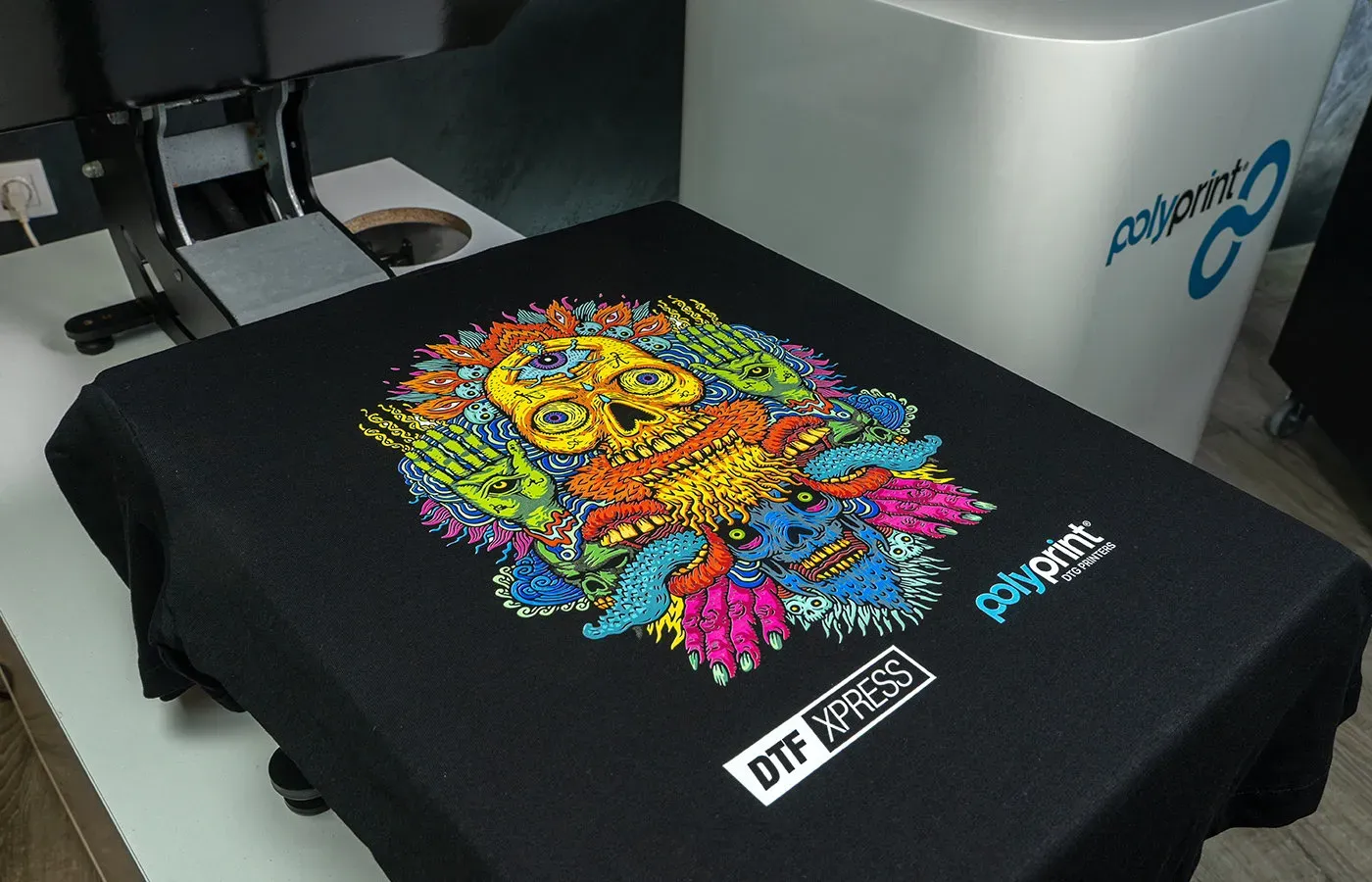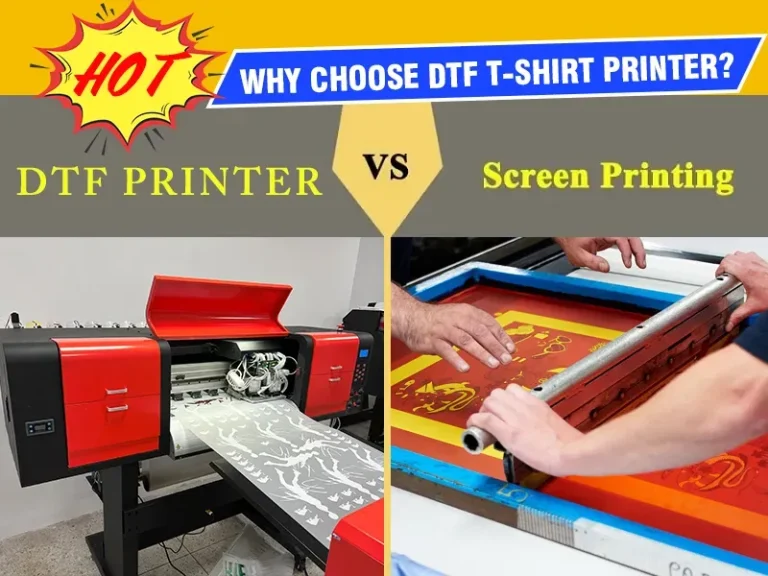DTF Printing: A Sustainable Solution for Custom Designs
In today’s rapidly evolving market, **DTF printing** (Direct-to-Film Printing) stands out as a revolutionary technique designed to meet the demands of both consumers and businesses for high-quality, customizable textile prints. This innovative print technology not only enables intricate designs and vibrant colors, but it also prioritizes sustainability, making it an eco-friendly choice for a range of applications. With growing popularity for sustainable printing, DTF printing plays a critical role in facilitating on-demand production, thereby minimizing waste and supporting the creation of custom textile designs that resonate with individual preferences. As brands and consumers alike seek greener alternatives, the implications of such technology extend far beyond aesthetics, fostering a significant shift towards environmentally conscious practices. By harnessing the potential of DTF printing, businesses can embrace a future where innovation and sustainability go hand in hand.
Often referred to as Direct-to-Film technology, DTF printing has emerged as a cutting-edge method in the realm of textile decoration. It illuminates a transformative approach to print production that marries personalization with environmental responsibility. This technique allows for remarkable flexibility in custom fabric designs, significantly reducing the ecological impact of the printing process compared to traditional methods. As market needs evolve, the importance of sustainable approaches in print technology continues to gain traction, with DTF serving as an exemplary model for on-demand production. Emphasizing minimal waste and efficient resource use, this method reflects a powerful shift in the way the textile industry operates, exemplifying how modern techniques can align with the values of today’s eco-conscious consumers.
Understanding DTF Printing and Its Benefits
DTF printing, or Direct-to-Film Printing, is revolutionizing the textile industry by offering a groundbreaking approach to fabric customization. This innovative method involves printing designs onto a film which is then transferred onto textiles using heat and pressure. Unlike conventional printing techniques such as screen printing that consume vast amounts of water and energy, DTF printing employs a more efficient process that conserves these vital resources. The versatility it offers allows businesses to meet the rising demand for custom textile designs while adhering to eco-friendly printing standards.
One of the key benefits of DTF printing is its ability to facilitate on-demand production. This significantly reduces the environmental impact associated with excess inventory and waste. In an age where sustainability is becoming a crucial factor in consumer choices, DTF printing positions itself as a superior alternative, catering to both the personalization needs of customers and the urgent need for businesses to adopt greener practices.
The Role of Eco-Friendly Materials in DTF Printing
The sustainability of DTF printing is largely attributed to the eco-friendly materials used throughout the printing process. Unlike traditional inks which often contain harmful solvents, DTF printing primarily utilizes water-based inks that pose minimal environmental risks. This transition towards safer inks not only protects the health of workers in the printing facilities but also aligns with the growing consumer preference for sustainable products.
Moreover, advancements in materials used for DTF printing, such as eco-friendly films and adhesives, further enhance its sustainability credentials. As manufacturers continue to innovate, the availability of sustainable resources will promote a more responsible approach to textile printing. Businesses that adopt these eco-friendly materials position themselves at the forefront of sustainability within the industry, appealing to a conscientious customer base.
Customization Capabilities of DTF Printing
DTF printing excels in its customization capabilities, making it an appealing option for businesses aiming to offer unique, personalized products. The technology allows for vibrant colors and intricate designs, ideal for creating custom textile designs that cater to diverse consumer tastes. With a focus on individuality, the DTF printing process empowers businesses to fulfill the increasing demand for bespoke items without jeopardizing their commitment to sustainability.
By integrating DTF printing into their production processes, companies can seamlessly balance quality and eco-friendliness. The high-resolution outputs not only attract consumers but also foster brand loyalty, as companies that prioritize sustainable practices resonate with environmentally conscious customers. In this way, DTF printing not only meets the demands for customization but elevates brands as responsible market leaders.
Industry Adoption Rates of DTF Printing
The rapid adoption of DTF printing across various sectors, such as fashion, sportswear, and promotional products, reflects a broader trend towards sustainable practices. As businesses recognize the importance of integrating eco-friendly technologies, DTF printing emerges as a frontrunner for meeting customization needs while minimizing ecological footprints. Companies are increasingly realizing that they can gain a competitive advantage by aligning their production methods with consumer preferences for sustainability.
Sustainable Fashion News reports that brands are increasingly turning to DTF printing as a strategy to meet customer demands for environmentally conscious products. By embracing DTF technology, businesses not only contribute positively to the environment but also adapt their operations to be more aligned with modern consumer values, leading to a significant shift towards responsible practices within the industry.
Scalability and Cost-Effectiveness of DTF Printing
DTF printing stands out for its remarkable scalability, making it a versatile solution for businesses of all sizes. Whether catering to small runs of limited edition designs or fulfilling mass production needs, DTF printing can efficiently adjust to varying order sizes. This characteristic is particularly beneficial for startups and larger enterprises looking to scale their offerings without incurring excessive costs associated with traditional printing methods.
As highlighted by industry analysts, the ability to produce high-quality prints on a demand-driven basis not only improves operational efficiency but also helps businesses maintain sustainable practices. The lower overhead costs associated with DTF printing facilitate easier market entry for new companies. Thus, DTF printing not only supports sustainability but also empowers businesses to thrive in the custom textile market.
The Future of Sustainable Printing: DTF Technology
The future of sustainable printing is undoubtedly intertwined with the evolution of DTF technology. As awareness of environmental issues grows, DTF printing stands out as a scalable and versatile option that aligns with the demands of modern eco-conscious consumers. Its unique process minimizes waste and promotes on-demand production, setting a precedent for future printing technologies aiming for sustainability.
As businesses and consumers alike continue to prioritize eco-friendly solutions, DTF printing will likely play a critical role in the transformation of the textile industry. With ongoing advancements in print technology and material innovations, the potential for DTF printing to support broader sustainability initiatives is enormous, ushering in a new era of responsible manufacturing practices.
Frequently Asked Questions
What is DTF printing and how does it work?
DTF printing, or Direct-to-Film printing, is a modern printing technique that transfers designs onto textiles using heat and pressure. This process prints designs onto a special film, which is then applied to the fabric. Unlike traditional methods, DTF printing is more eco-friendly as it reduces water and energy consumption, making it a popular choice for sustainable printing.
How does DTF printing contribute to sustainable printing practices?
DTF printing supports sustainable printing by minimizing waste through on-demand production, which eliminates excess inventory and the need for large runs. It also uses water-based inks that are less harmful to the environment, reducing toxic emissions associated with solvent-based inks. This makes DTF printing a valuable option for businesses prioritizing eco-friendly printing solutions.
What types of materials are used in DTF printing?
The primary materials used in DTF printing include water-based inks and specially designed films. Many suppliers are now offering eco-friendly films and adhesives, further enhancing the sustainability profile of the process. These materials not only reduce environmental impact but also ensure high-quality, vibrant prints that meet consumer demands.
Can DTF printing produce custom textile designs effectively?
Yes, DTF printing excels in producing custom textile designs with high-quality results. The technology allows for intricate details and vibrant colors, making it suitable for personalized items. As consumers increasingly seek unique products, DTF printing meets this demand while maintaining a commitment to sustainable practices.
Which industries are adopting DTF printing for eco-friendly printing solutions?
DTF printing is gaining traction in various industries, including fashion, sportswear, and promotional products. As these sectors strive to adopt sustainable practices, they are turning to DTF technology for its efficiency and customization capabilities, aligning their operations with consumer preferences for eco-friendly products.
What advantages does DTF printing offer for on-demand production?
DTF printing offers significant advantages for on-demand production due to its ability to cater to both small runs and larger quantities without the need for extensive setup. This scalability allows businesses to efficiently respond to market demands without overcommitting resources, making it an ideal solution for sustainable production in the custom design market.
| Key Point | Details |
|---|---|
| Introduction | DTF printing is an eco-friendly textile printing method focused on sustainability, vibrant colors, and intricate designs. |
| What is DTF Printing? | A process where designs are printed on a film and transferred to fabric, minimizing waste and resource usage compared to traditional methods. |
| Environmental Impact | DTF printing reduces water and energy consumption, allowing on-demand production and minimizing inventory waste. |
| Materials Used | Utilizes primarily water-based inks rather than harmful solvent-based options and promotes the use of eco-friendly films and adhesives. |
| Customization and Quality | Offers high-quality, vibrant prints and supports personalization trends, enhancing customer satisfaction and brand loyalty. |
| Industry Adoption | Rapidly gaining traction in fashion, sportswear, and promotional products, aligning with businesses’ sustainability goals. |
| Potential for Scalability | Flexible for both small and large production runs, ideal for startups and established companies looking to minimize costs. |
Summary
DTF printing is revolutionizing the textile printing industry with its sustainable approach to custom designs. By significantly reducing water and energy usage, employing eco-friendly materials, and offering vibrant and high-quality prints, DTF printing stands as a leading method for businesses seeking to enhance their eco-conscious practices. As industries continue to evolve towards sustainability, DTF printing offers the flexibility and efficiency needed to meet the growing demands for personalization while contributing positively to the environment. Its scalability also ensures that businesses of all sizes can adopt this innovative technology, fostering a brighter and more sustainable future in textile printing.





